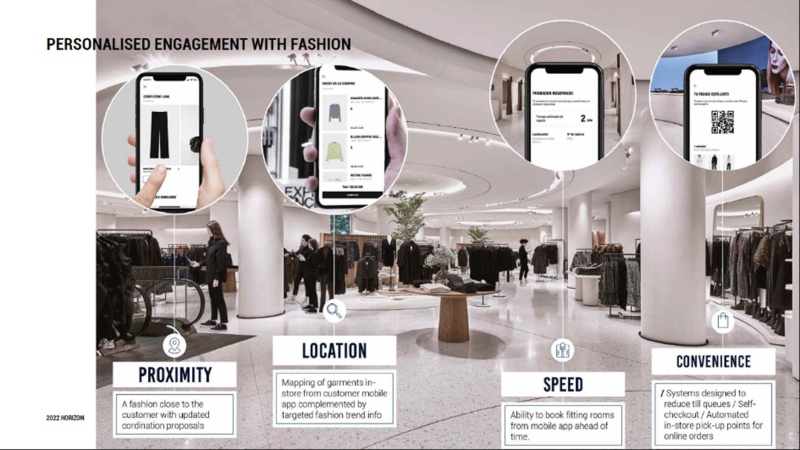This isn’t just another rundown of trendy design elements or UX features; it’s an exploration of the paradigm shifts transforming the digital realm. As online behaviours evolve, so must our approach to crafting user experiences across various digital platforms. In today’s dynamic digital landscape, understanding and adapting to emerging trends in digital Customer Experience (CX) is essential for businesses striving to remain relevant and competitive. Here, we’ll explore five key trends revolutionising CX and how they’re reshaping the way businesses engage with their customers.
1. Hyper-personalisation
What it is: Personalisation has long been a cornerstone of effective customer experience strategies, but the trend is shifting towards hyper-personalisation. Hyper-personalisation takes personalisation to the next level by leveraging advanced technologies such as AI and machine learning to deliver highly tailored experiences to individual customers. It involves analysing vast amounts of data, including browsing history, purchase behaviour, demographic information, and social media interactions, to provide personalised recommendations, content, and offers in real-time.
Why it’s a trend: The rise of hyper-personalisation can be attributed to the increasing demand for personalised experiences from today’s consumers. With access to an abundance of data and sophisticated analytics tools, businesses are able to better understand their customers’ preferences, behaviours, and intent, allowing them to deliver more relevant and engaging experiences across all touchpoints.
Why it matters: Hyper-personalisation matters because it allows businesses to forge deeper connections with their customers, increase engagement, and drive conversions. By delivering personalised experiences that resonate with individual preferences and needs, businesses can enhance customer satisfaction, foster brand loyalty, and ultimately drive revenue growth. Moreover, in a crowded marketplace where competition is fierce, hyper-personalisation can serve as a key differentiator, helping businesses stand out and capture market share.

2. Augmenting your UAT resources
What it is: Accessible design ensures equal access to digital products and services for individuals with disabilities or limitations. It involves designing digital experiences that are usable by all users, regardless of their abilities or assistive technologies. This includes considerations such as screen readers for the visually impaired, alternative text for images, keyboard navigation for those with mobility impairments, and captioning for videos.
Why it’s a trend: The push for accessible design originates from the need to cater to diverse demographics and ensure inclusivity in digital experiences. As technology becomes increasingly integrated into our daily lives, it is essential that everyone, including those with disabilities, has access to digital products and services. This has led to a growing awareness and emphasis on designing digital experiences that are accessible to all.
Why it matters: Accessible design matters because it promotes inclusivity, diversity, and equal access to digital experiences for all users. By ensuring that digital products and services are accessible to individuals with disabilities, businesses can expand their market reach, enhance brand reputation, and comply with legal and regulatory requirements. Moreover, accessible design is not only a moral imperative but also makes good business sense, as it can lead to increased customer satisfaction, loyalty, and engagement. In an increasingly digital world, accessible design is essential for creating a more equitable and inclusive society.
3. Voice commerce:
What it is: Voice commerce refers to the use of voice-enabled devices, such as smart speakers and virtual assistants, to make purchases and conduct transactions online. With the increasing popularity of devices like Amazon Echo and Google Home, voice commerce is reshaping the way consumers shop by providing a hands-free and convenient shopping experience.
Why it’s a trend: The rise of voice commerce can be traced back to the growing adoption of smart speakers and virtual assistants in households worldwide. As consumers become more comfortable with using voice commands to interact with technology, businesses are capitalising on this trend by integrating voice-enabled capabilities into their e-commerce platforms.
Why it matters: Voice commerce matters because it offers a frictionless and intuitive shopping experience for consumers, allowing them to make purchases effortlessly using just their voice. By leveraging voice technology, businesses can streamline the purchasing process, reduce barriers to entry, and drive impulse purchases. Additionally, voice commerce opens up new opportunities for businesses to engage with customers in innovative ways and stay ahead of the competition in an increasingly digital landscape.
4. AI driven customer service
What it is: AI-driven customer service involves the use of artificial intelligence and automation technologies to enhance customer support and engagement. From chatbots and virtual assistants to predictive analytics and natural language processing, AI-powered solutions enable businesses to deliver faster, more personalised, and efficient customer service experiences across various channels.
Why it’s a trend: The adoption of AI-driven customer service is driven by the need to scale support operations, improve response times, and deliver consistent experiences in an increasingly digital and always-on world. As customer expectations continue to evolve, businesses are turning to AI to automate routine tasks, provide instant assistance, and personalise interactions based on individual preferences and past interactions.
Why it matters: AI-driven customer service matters because it enables businesses to deliver seamless and proactive support experiences that meet the needs and expectations of today’s consumers. By leveraging AI-powered solutions, businesses can reduce wait times, resolve issues more efficiently, and deliver personalised recommendations and solutions in real-time. Moreover, AI-driven customer service can help businesses optimise resources, improve agent productivity, and build stronger relationships with customers, ultimately driving satisfaction, loyalty, and retention.
5. Immersive technologies:
What it is: Immersive technologies, such as augmented reality (AR) and virtual reality (VR), create immersive and interactive experiences that blur the lines between the physical and digital worlds. From virtual try-on experiences and interactive product demos to virtual tours and immersive storytelling, these technologies enable businesses to engage customers in new and innovative ways.
Why it’s a trend: The adoption of immersive technologies is fuelled by advancements in hardware, software, and content creation tools, making it more accessible and affordable for businesses of all sizes. As consumers seek more engaging and memorable experiences, businesses are leveraging AR and VR to create immersive brand experiences that captivate and inspire audiences.
Why it matters: Immersive technologies matter because they enable businesses to create compelling and unforgettable experiences that drive engagement, differentiation, and brand loyalty. By allowing customers to interact with products and experiences in virtual environments, businesses can enhance the shopping experience, increase confidence in purchase decisions, and foster emotional connections with their brands. Moreover, immersive technologies offer endless possibilities for creativity and innovation, empowering businesses to stand out in a crowded marketplace and create lasting impressions that resonate with customers long after the experience ends.
6. Omnichannel & in-store apps integration:
What it is: Omnichannel and in-store apps integration involves leveraging digital technologies to create seamless experiences for customers across online and offline channels. These integrated solutions allow customers to transition effortlessly between digital platforms and physical stores, providing continuity and convenience throughout their shopping journey. ‘Store mode’ features may include mobile ordering for in-store pickup, real-time inventory visibility, personalised offers based on online browsing behaviour, and loyalty program integration.
Why it’s a trend: As consumer expectations continue to evolve, there is a growing demand for cohesive shopping experiences that bridge the gap between online and offline channels. Omnichannel and in-store apps integration addresses this demand by offering customers the flexibility to interact with brands through their preferred channels, whether it be online via mobile apps or in-person at brick-and-mortar stores. This trend also enables retailers to capture valuable data on customer behaviour across different touchpoints, facilitating more targeted marketing strategies and enhancing overall customer satisfaction.
Why it matters: Omnichannel and in-store apps integration matters because it provides customers with a seamless and personalised shopping experience that meets their evolving needs and preferences. By breaking down the barriers between digital and physical retail environments, businesses can drive customer engagement, increase sales, and foster long-term loyalty. Additionally, the insights gained from omnichannel interactions enable businesses to optimize their operations, improve inventory management, and deliver more relevant marketing campaigns, ultimately driving business growth and competitive advantage in today’s dynamic retail landscape.

Image Source: Colitco
In essence, these trends signify more than fleeting design trends; they underscore fundamental changes in how businesses interact with their customers in the digital sphere. By embracing hyper-personalisation, accessible design, voice commerce, AI-driven customer service, immersive technologies and in-store apps, businesses can position themselves for success in a rapidly evolving digital landscape. As the digital landscape continues to evolve, businesses must remain agile and responsive to these trends to continue delivering exceptional customer experiences that drive loyalty and growth.






